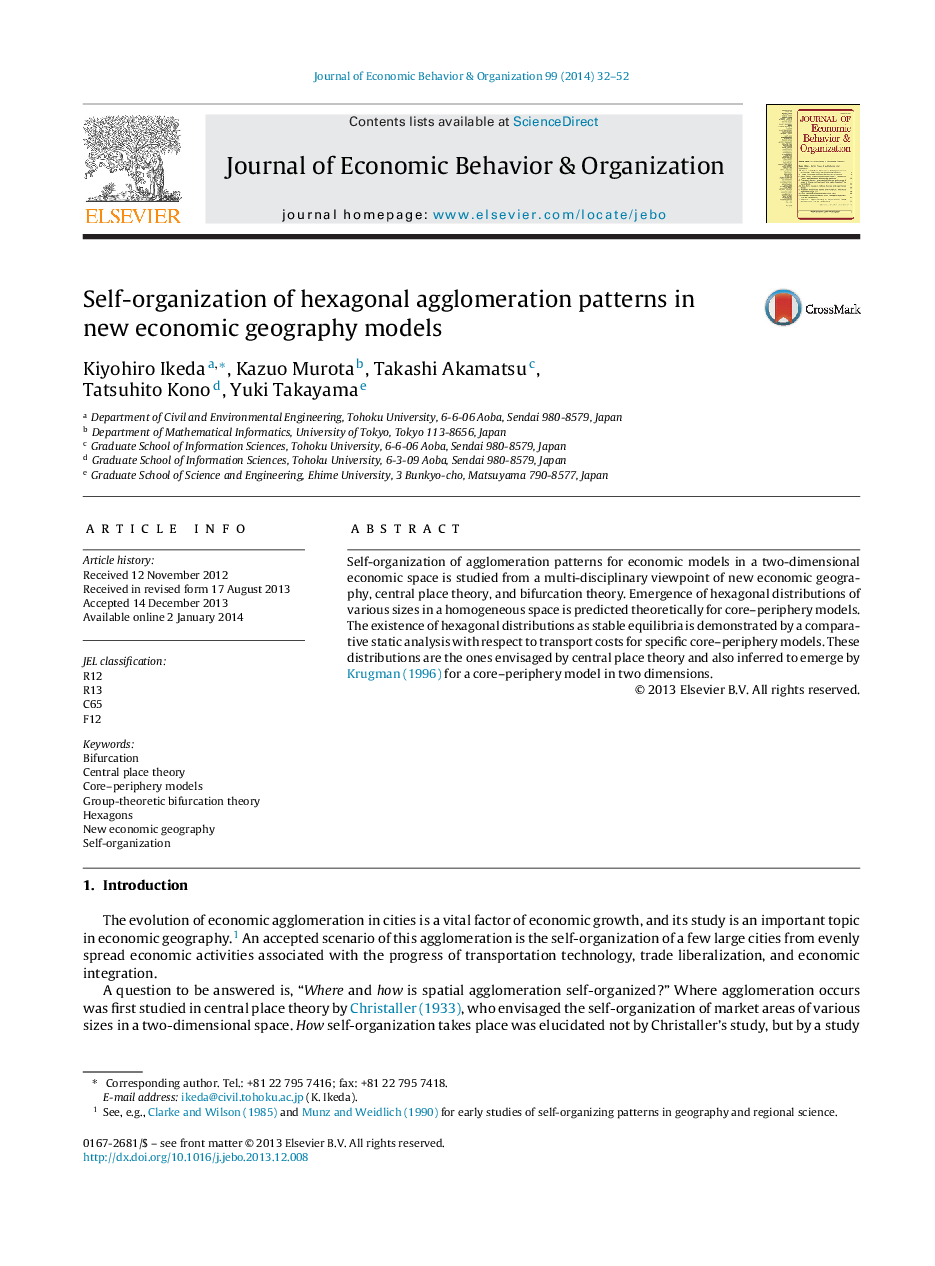| Article ID | Journal | Published Year | Pages | File Type |
|---|---|---|---|---|
| 7243573 | Journal of Economic Behavior & Organization | 2014 | 21 Pages |
Abstract
Self-organization of agglomeration patterns for economic models in a two-dimensional economic space is studied from a multi-disciplinary viewpoint of new economic geography, central place theory, and bifurcation theory. Emergence of hexagonal distributions of various sizes in a homogeneous space is predicted theoretically for core-periphery models. The existence of hexagonal distributions as stable equilibria is demonstrated by a comparative static analysis with respect to transport costs for specific core-periphery models. These distributions are the ones envisaged by central place theory and also inferred to emerge by Krugman (1996) for a core-periphery model in two dimensions.
Related Topics
Social Sciences and Humanities
Economics, Econometrics and Finance
Economics and Econometrics
Authors
Kiyohiro Ikeda, Kazuo Murota, Takashi Akamatsu, Tatsuhito Kono, Yuki Takayama,
